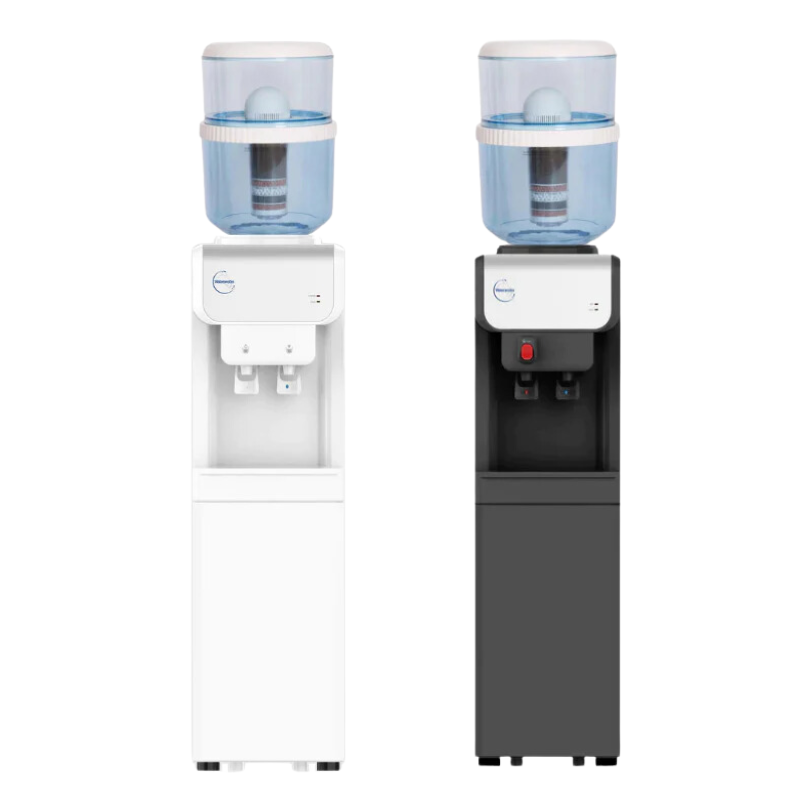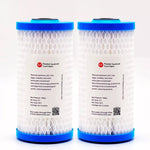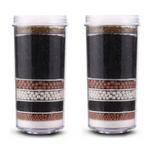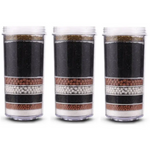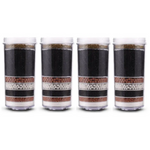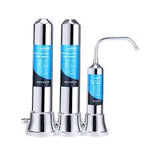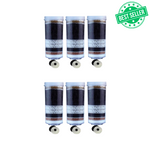You have no items in your shopping cart.
While you can remove most contaminants using a typical water filter, fluoride in water is more difficult to remove. That's why most people's question is how to remove fluoride from water.
Experts say that installing a specialized filter or using a water dispenser system is the most effective approach to remove fluoride from your water source. In this article, we'll talk about fluoride in your water, and what are your possible options to remove it.
WHY IS THERE FLUORIDE IN MY WATER?
Fluoridation has been utilized in our water sources as an oral health help since 1953, two years after its approval across the United States. In 2016, it provided artificially fluoridated water to over 70% of the population in all Australian states and territories. Because Australia has a warmer climate than North America, our recommended levels differ dramatically, with the recommended daily amounts falling within the Australian Drinking Water limits of no more than 1.5 mg/L.
While fluoride is universally considered beneficial to oral health, helping to prevent tooth decay, there is still debate whether swallowing the material directly is hazardous to our overall health.
Fluoride has been added to Australia's drinking water since 1953 by utility companies to enhance dental health. Over 70% of tap water sources found artificially fluoridated water across all Australian states and territories as of 2016. However, other experts, notably Australian Fluoride Action and South Australian Independent Candidate and Civil Rights Advocate Mark Aldridge, argue that the chemical should be removed from our water entirely owing to health risks.

IS IT BAD TO CONSUME IT?
Even while there is proof that fluoride is beneficial to your teeth, too much of the substance can cause major health problems. If there is an undesired concentration of the mineral in your drinking water, you can make an informed decision to have it removed.
FLUORIDE AND HEALTH
Fluoride is not detrimental to your health in its natural state. On the other hand, Artificial fluoride can contain by-products including fluorosilicic acid, sodium silicofluoride, and sodium fluoride when added to water. These can harm your overall health and cause dental fluorosis and staining of your teeth, which is the most typical negative effect of too much fluoride.
The Australian government has determined that 1.5mg of fluoride per liter of water is safe to avoid any negative effects. However, the world's leading health organization, the Center for Disease Control and Prevention (CDC), suggests a level of 0.7mg per liter as the ideal balance for preserving oral health while avoiding any negative consequences.
Some industry experts (like Dr. Mercola) say that fluoride can still create health complications even at the defined safe level. According to multiple studies, it might affect the brain and thyroid and behavioral issues like autism and ADHD.
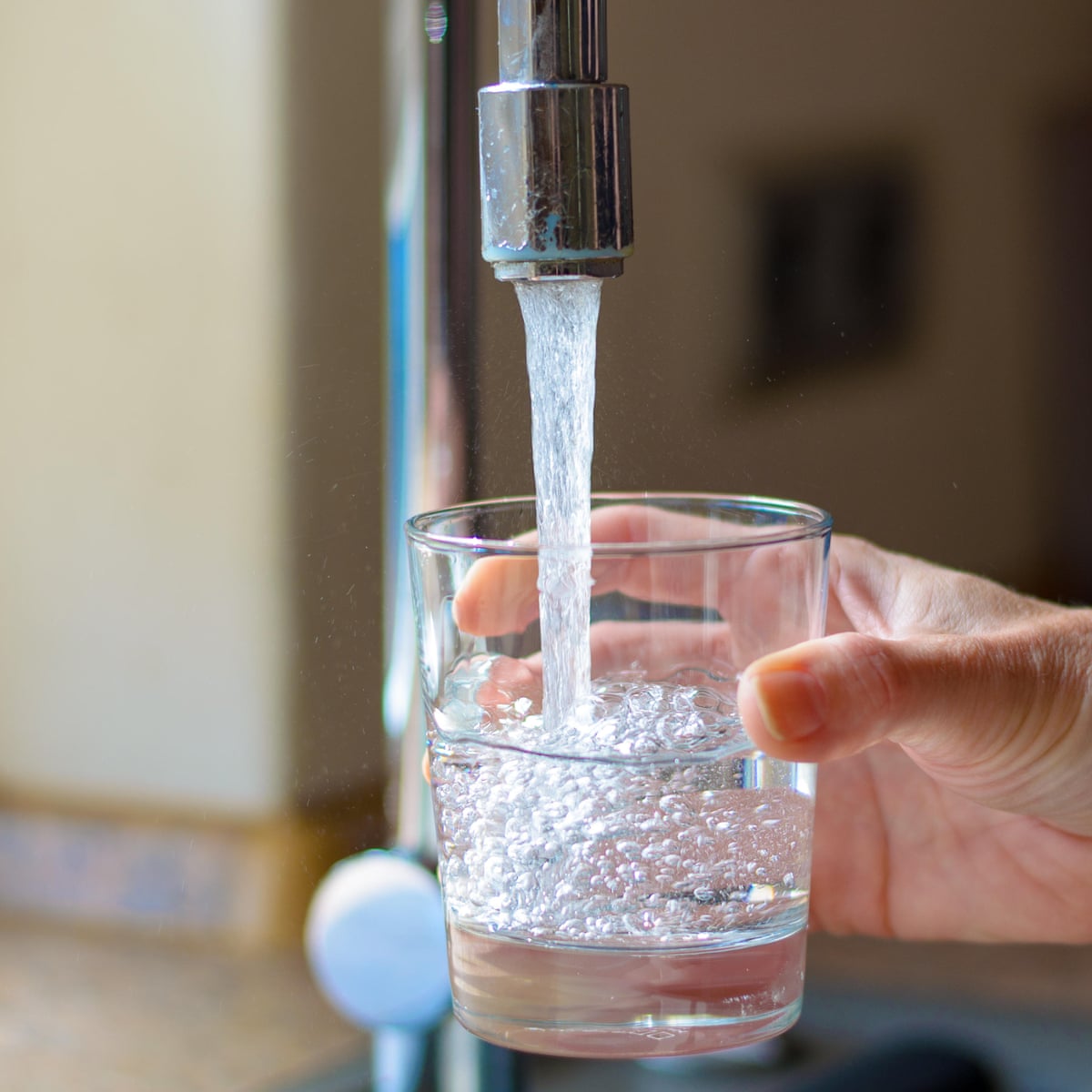
IMPORTANT FACTS ABOUT FLUORIDE AND ITS CONSUMPTION
- The most common water filters, such as the low-cost activated-carbon pitchers and tap-attachments sold under big-brand names, cannot remove fluoride.
- Boiling your water will not help since fluoride does not evaporate as easily as chlorine. When the volume of water minimizes by boiling, the fluoride concentration rises.
- Black and green tea and rooibos or "red tea" all include high levels of natural fluoride. These drinks also deliver helpful antioxidants, but if you're concerned about your overall fluoride intake, cut back on your tea consumption.
- You can find fluoride in many processed foods and beverages, nonstick cookware, non-organic grape juice, some pharma and wine, and fluoride toothpaste.
HOW TO REMOVE FLUORIDE FROM WATER
Many people are attempting to find a way to remove fluoridated water from their tap water due to the health risks linked with it.
To properly achieve non-fluoridated water, these ions must be dealt with on a chemical level for effective removal. To eliminate fluoride from your tap water, use the following methods:
Reverse Osmosis
Pressure forces water over a permeable membrane that only enables molecules to pass through in reverse osmosis. Fluoride and other minerals and impurities are removed from the water, leaving only pure fluoride-free water on the opposite side of the membrane.
You can purchase an RO filter for your home. These water filtration systems, usually installed beneath the kitchen sink, treat both drinking and cooking water. Whole-house filters are also available, which installation is at the home's main water supply.
While putting together a reverse osmosis system at home is possible, it's frequently more expensive than purchasing one. There are a few drawbacks to reverse osmosis. While it removes fluoride, germs, and pesticides, it also filters calcium, iron, and other substances that may be good for your health.
Distillation
Distillation is a simple and cost-effective way to eliminate fluoride from water. As the water heats up, the steam from the boiling water evaporates and is collected in another container. When the vapors in the other container cool, they return to being pure and distilled water. Fluoride and other pollutants remain throughout this process.
Is it possible to distill water at home, though? You can either get a distiller to do the work for you or do it yourself. Follow these steps to distill your water at home without using big machinery:
- Fill a pot halfway with water and put it on the heat.
- Inside the pot, put a stainless steel bowl. Ensure that the edge is above the water's surface.
- Place an upside-down concave lid over the pot. It should be able to produce a secure seal.
- On top of the lid, place an ice pack.
- Heat the water to the point when it starts to boil. Steam will rise toward the chilly lid as the water develops moisture. Vapor will condense fast, forming droplets that will trickle into the stainless steel basin.
- Continue heating the water until you get a sufficient quantity of distilled (fluoride-free) water.
Activated Alumina
Aluminum oxide in the form of activated alumina is porous and solid. The EPA supports it as a feasible alternative for purifying drinking water since it efficiently absorbs fluoride and other pollutants from water.
Only water with a pH of less than 8.5 will pass through these alumina filters. The pH of the water should be around 5 and 6 for fluoride elimination. It absorbs pollutants into the activated alumina grains as water travels through the filter, resulting in purer water.
Although the equipment is available for purchase, the activated alumina filtration system is a difficult procedure best left to water treatment professionals. Small filtering options, such as water bottles or a home filter system, are available.
Bone Char Carbon
One of the earliest methods for removing fluoride from water is bone char (BC) carbon. It comes in the form of water filter cartridges and can remove up to 90% of the minerals in the water.
It's another way of removing fluoride that is difficult to do at home. Heating animal bones create bone char to extremely high temperatures.
It may not be a good idea if you're a vegan.
DO I HAVE TO FILTER FLUORIDE
Even while there is proof that fluoride is beneficial to your teeth, too much of the substance can cause major health problems. If there is an undesired level of the mineral in your drinking water, you can make an informed decision to have it removed.
When studying removing fluoride from water, consider employing tried-and-true technologies like distillation, BC carbon, reverse osmosis, and activated alumina.
EFFECTS OF TOO MUCH FLUORIDE CONSUMPTION
Thyroid Issues
People who take a lot of fluoride risk having their parathyroid glands destroyed. This injury might result in a constant release of parathyroid hormones.
As a result of the abnormally high calcium content in the blood, bones start to lose calcium. In people who eat high quantities of fluoride regularly, lower calcium levels in the bones can raise the risk of fractures and breaks.
Bone and Dental Issues
Fluoride overuse, particularly in drinking water, can trigger dental fluorosis, which affects the teeth and bones. Fluorosis creates brittle and inelastic bones and teeth, leading to fractures, joint damage, tooth injury, and infection.
Neurological Problems
According to a 2017 study, expectant mothers exposed to higher fluoride concentrations have a higher risk of giving birth to babies with inferior cognitive abilities. Furthermore, larger quantities of this mineral associates with lower IQ. According to one study, fluoride is neurotoxic that may harm children's cognitive development.
Other Health Problems
Skin disorders, cardiovascular troubles, and reproductive issues have links to excessive fluoride exposure. All of these difficulties and proof of fluoride policy corruption have sparked an anti-fluoride movement that isn't going away anytime soon.

FINAL THOUGHTS: How to Remove Fluoride From Water
It's becoming increasingly difficult to take a refreshing glass of water for granted. Battles erupt in communities big and small across the country about whether adding fluoride to the water system is a safe, common-sense public benefit or a sinister act of government-sponsored health harm.
If you have any concerns about the level of fluoride in your tap water, the best line of action is to speak with your water provider.

